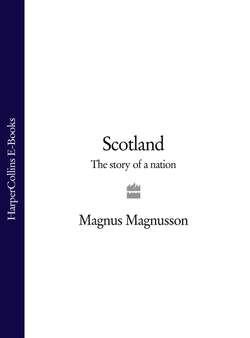Читать книгу Scotland: The Story of a Nation - Magnus Magnusson - Страница 48
The Norway connection
ОглавлениеThe death of Håkon IV in 1263, and the Treaty of Perth which ensued in 1266, cleared the political air between Norway and Scotland and helped to create a greatly improved relationship. This was cemented when Alexander’s only daughter, Margaret, was betrothed to the grandson of Håkon the Old in the spring of 1281. The bride was nineteen years old, the bridegroom only fourteen; but he was the new king of Norway, Erik II, son of King Magnus the Law-Reformer. The marriage of these two royal youngsters symbolised the new amity across the North Sea and augured well for the future. In the event, however, it was all to end in tragedy, not only for Scotland and Norway but most especially for Alexander III himself; for 1281 also saw the first of a series of crushing family mishaps which were to darken the last years of his vigorous and successful reign.
His wife Margaret, sister of Edward I, had died in 1275, but Alexander saw no cause to marry again. However, in June 1281 his younger son, David, fell ill and died at Stirling Castle; he was eight years old. The mourning weeds had to be shrugged aside to celebrate his daughter Margaret’s wedding and coronation in Bergen two months later. But on 9 April 1283, not two years after the marriage, Queen Margaret died at Tönsberg, apparently in childbirth. She was only twenty-two years old, and she left a sickly infant daughter, also christened Margaret, the ‘Maid of Norway’ who would be Queen of Scots for a brief time (see Chapter 9).
And then, less than a year later, came the third and cruellest blow so far: on 17 January 1284 Alexander’s elder son, Alexander the Prince of Scotland, who had been born on the very day twenty years earlier on which news of King Håkon’s death had reached his father, died at Lindores Abbey in Fife after a long illness. Young Alexander had been married for just over a year, and died without issue.
The widower king had now lost all three of his children, and Scotland had lost all the immediate male heirs to the throne. But tragedy has to be overcome, and Alexander and his nation set about picking up the pieces. On 5 February 1284 the magnates of Scotland, meeting at Scone, acknowledged the infant Princess Margaret, the Maid of Norway, as heir presumptive to the Scottish throne, failing any further issue of her grandfather. Some of the nobility were unhappy about it, however: not only was she an infant, she was also a girl – and there was no precedent for a female ruler of Scotland. Besides, many of them felt that they themselves had a better claim to the Scottish throne. They comforted themselves with the thought that Alexander, who was still in his early forties, had plenty of time in which to produce another son.
Alexander recognised that he had to marry again. The bride he chose was Yolande, Comtesse de Montford, daughter of Robert IV, Comte de Dreux, a vassal of Edward I of England. They married in Jedburgh Abbey on 14 October 1285. But once again tragedy struck, the worst tragedy of all. Only five months after the wedding, Alexander III’s thirty-six-year reign came to an abrupt end.
